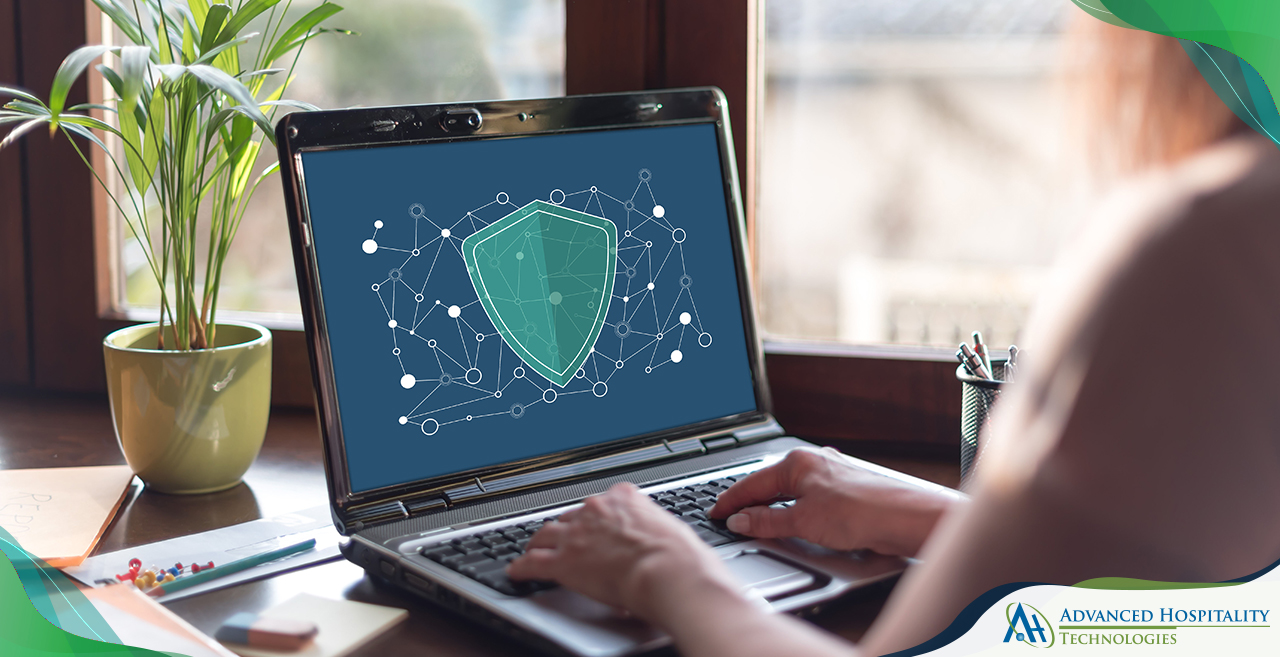Introduction
Nowadays hotels are increasingly reliant on technology to manage guest information and provide personalized experiences. However, this reliance also makes them vulnerable to cyber threats. Implementing robust technological solutions is essential for protecting hotel guest data and maintaining trust. Here’s a detailed look at the role of technology in safeguarding guest data security in the hospitality industry.
Encryption: The First Line of Defense
Why Encryption Matters: Encryption converts data into a code to prevent unauthorized access. It is a fundamental technology for protecting sensitive information such as guest credit card details, personal identification, and booking information.
Types of Encryptions:
- Data-at-Rest Encryption: Protects data stored on servers, databases, and other storage devices. Even if physical devices are compromised, encrypted data remains inaccessible without the decryption key.
- Data-in-Transit Encryption: Protects data transmitted over networks. Technologies like SSL/TLS ensure that data sent between guests and hotel systems is secure from interception.
Hotels should use strong encryption protocols for both data-at-rest and data-in-transit to ensure guest data security. Regular updates and audits of encryption methods ensure they remain effective against emerging threats.
Firewalls and Intrusion Detection Systems (IDS): Gatekeepers of Network Security
Firewalls: Firewalls act as barriers between trusted internal networks and untrusted external networks (e.g., the internet). They monitor and control incoming and outgoing network traffic based on predetermined security rules.
Intrusion Detection Systems (IDS): IDS monitor network or system activities for malicious activities or policy violations. They can detect unusual behavior that might indicate a cyber-attack.
Hotels should deploy advanced firewalls and IDS to monitor traffic and detect potential threats in real-time. Combining these technologies with regular security audits helps identify and mitigate vulnerabilities and protect hotel guest data.
Multi-Factor Authentication (MFA): Adding an Extra Layer of Security
MFA adds an extra layer of security by requiring multiple forms of verification before granting access to sensitive data. It typically involves something the user knows (password), something the user has (security token), and something the user is (biometric verification).
Hotels should implement MFA for all staff accessing sensitive guest data. This significantly reduces the risk of unauthorized access due to compromised passwords and ensures guest data security and protects guest information.
Secure Wi-Fi Networks: Safe Connectivity for Guests and Staff
Guests expect reliable and secure Wi-Fi access during their stay. Unsecured networks can be a gateway for cybercriminals to access hotel guest data, guest devices and hotel systems. Hotels should provide separate networks for guests and staff. Secure guest Wi-Fi networks with WPA3 encryption and strong passwords. Regularly update network security protocols and educate guests on safe Wi-Fi practices.
Data Loss Prevention (DLP) Solutions: Keeping Data Where It Belongs
DLP solutions protect guest information by monitoring, detecting, and preventing unauthorized access and transmission of sensitive data. They help ensure that guest data is not accidentally or maliciously shared outside the hotel’s secure environment.
Best Practices: Deploy DLP solutions to monitor all data transfers within the hotel’s network. Configure policies to prevent sensitive data from being emailed, copied to external drives, or uploaded to cloud services without authorization.
AI and Machine Learning: Smarter Security Measures
AI and machine learning can analyze vast amounts of data to identify patterns and anomalies that indicate potential security threats to guest data security. These technologies can detect sophisticated attacks that traditional methods might miss.
Best Practices: Incorporate AI and machine learning into the hotel’s cybersecurity framework. Use these technologies to continuously monitor network activity, identify potential threats, and automate responses to mitigate risks quickly.
Regular Software Updates and Patch Management: Staying Ahead of Threats
Outdated software can have vulnerabilities that cybercriminals exploit. Regular updates and patch management are crucial for maintaining a secure IT environment. Establish a protocol for regular software updates and patches for all systems, including servers, workstations, and mobile devices. Automate the process where possible to ensure timely updates.
Guest Data Management Systems: Robust and Secure
Robust data management systems ensure that guest information is stored securely and is only accessible to authorized personnel. These systems can include Property Management Systems (PMS), Customer Relationship Management (CRM), and other integrated platforms.
Choose data management systems with built-in security features such as access controls, encryption, and audit trails. Regularly review and update system configurations to comply with the latest security standards to ensure guest data security and protect hotel guest data.
Conclusion
Protecting guest data is a critical responsibility for hotels. By leveraging advanced technological solutions such as encryption, firewalls, MFA, secure Wi-Fi, DLP, AI, and machine learning, hotels can significantly enhance their data security measures. Regular updates, staff training, and a proactive approach to cybersecurity will help ensure that guest data remains safe and secure, fostering trust and loyalty among guests.


